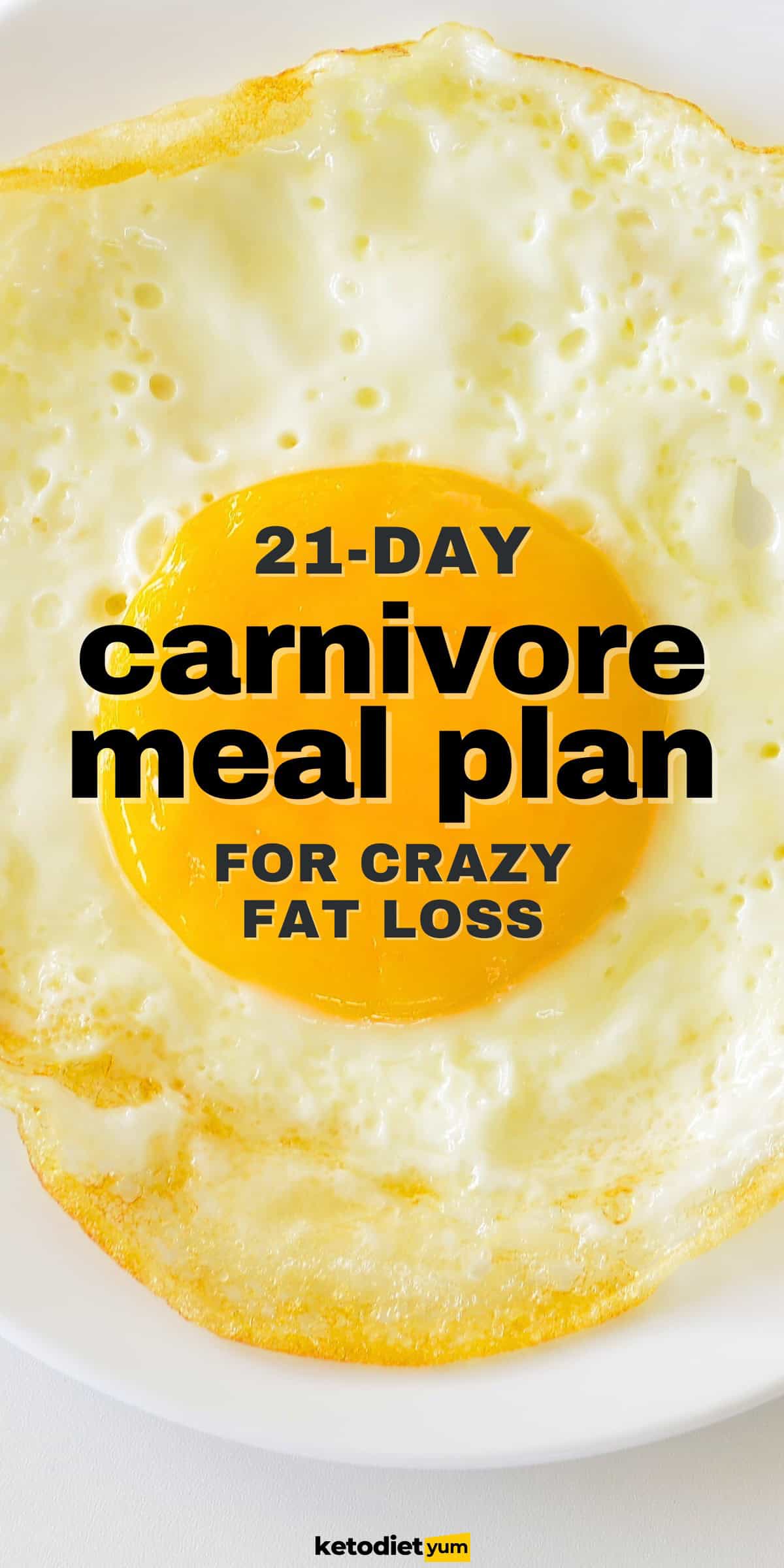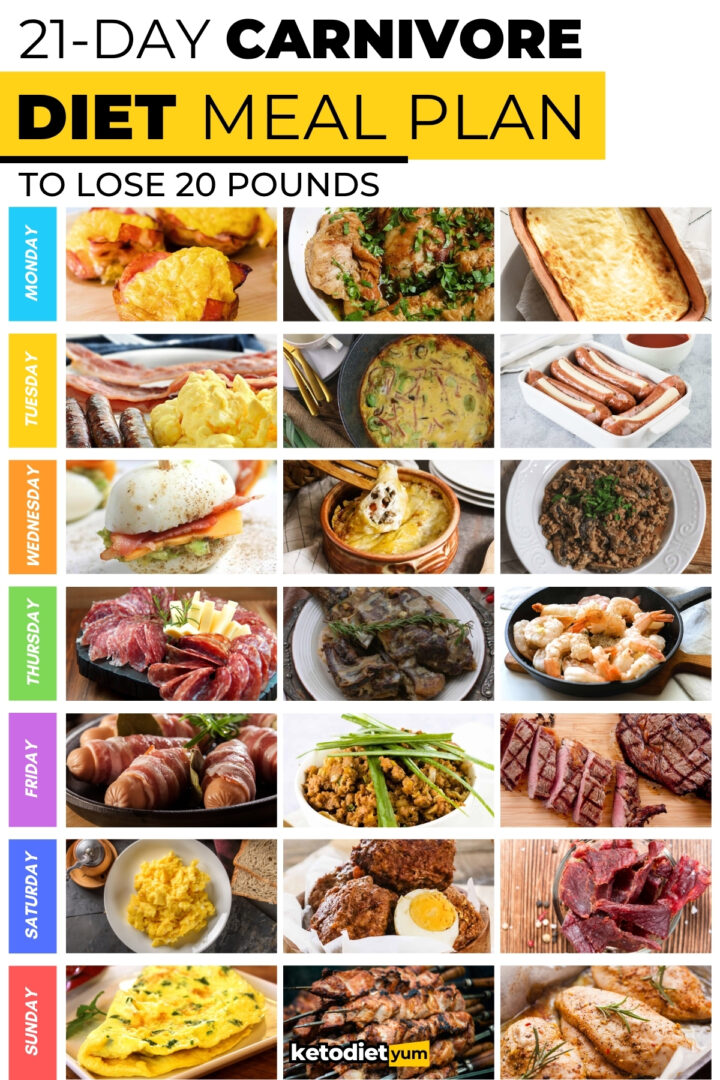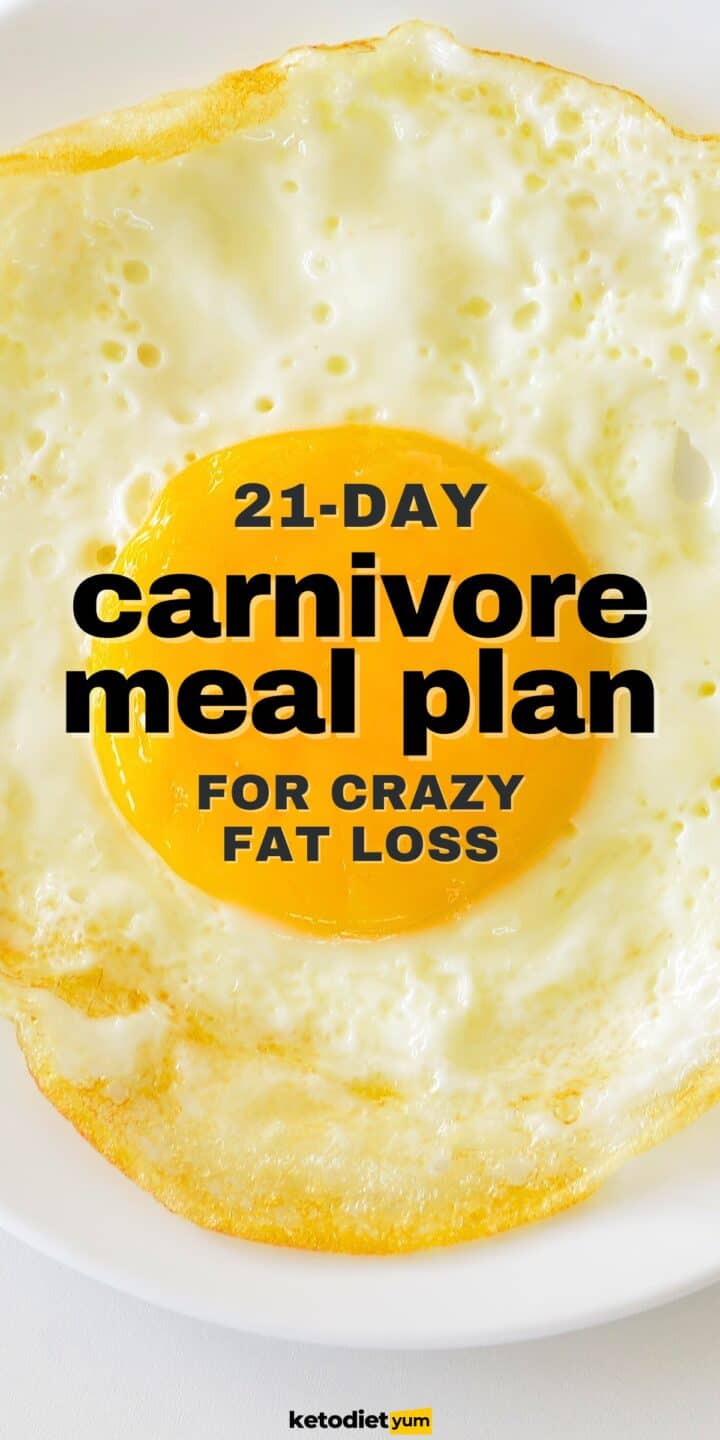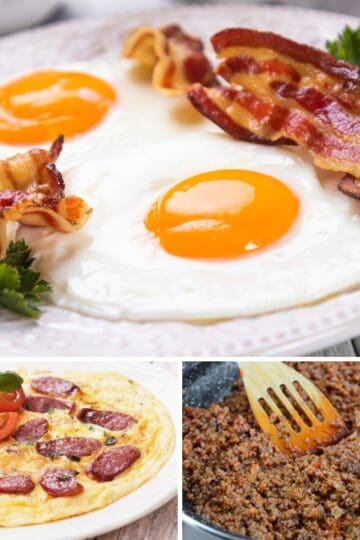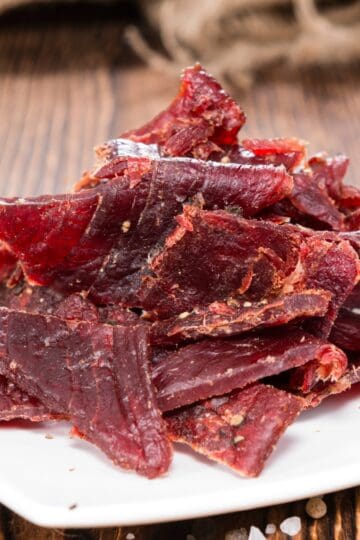So you are thinking about starting the carnivore diet for beginners, and you want something simple, satisfying, and easy to follow. Think meat, eggs, and rich animal foods that keep you full without the constant guessing or endless diet rules. No carbs, no veggies, no stress. If you are tired of feeling overwhelmed by complicated meal plans or mixed advice, the carnivore diet might feel like a breath of fresh air. This beginner friendly guide breaks everything down into clear, simple steps so you can get started with confidence and focus on what really matters: feeling better and seeing real results.
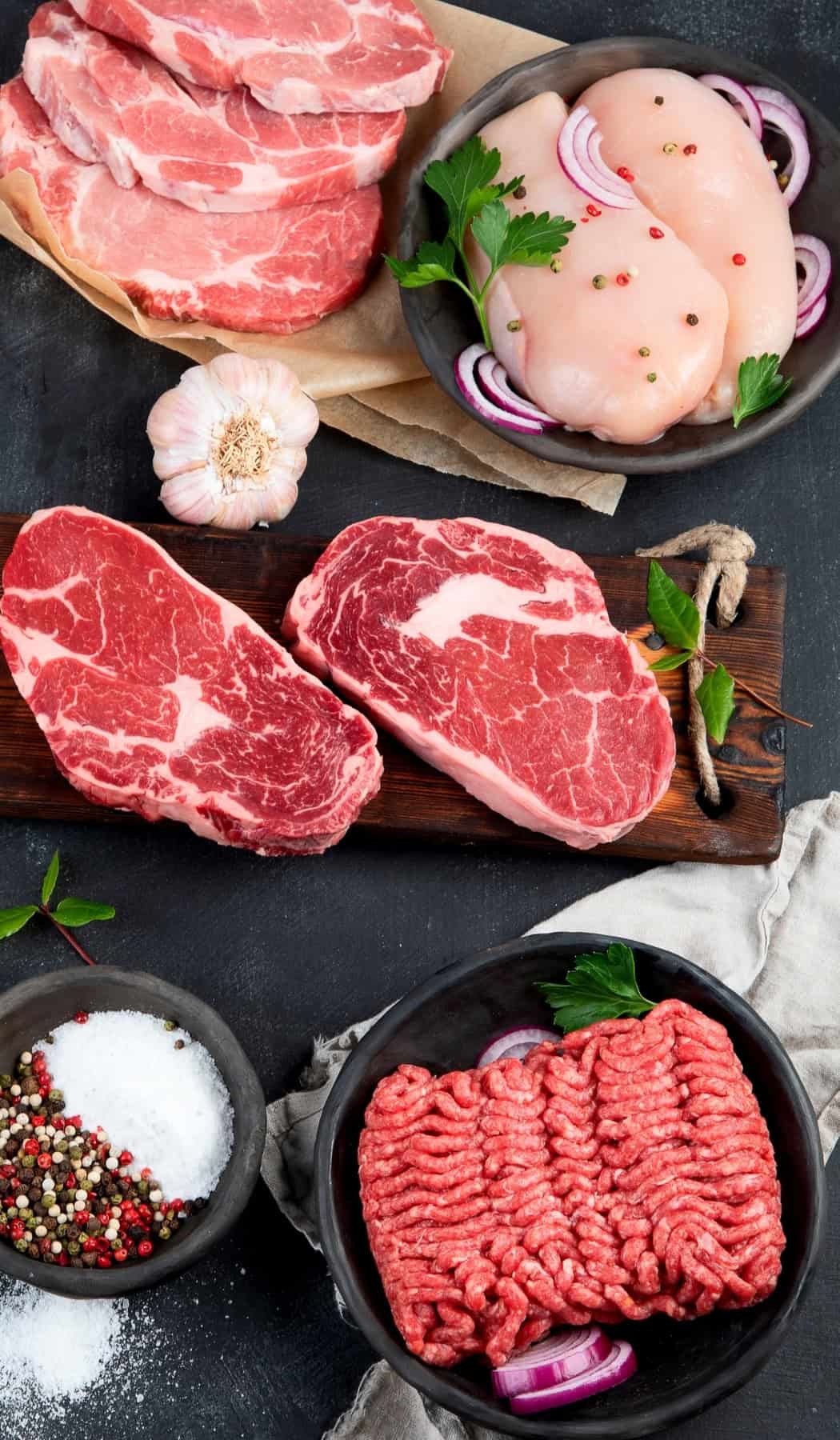
Introduction to Carnivore
Let me tell you about something radically simple that's turning heads in the health world: the Carnivore Diet.
Every week, there's a buzz about a new eating trend, plant-based this, gluten-free that, high-fiber, low-fat, you name it. It can feel like a revolving door of dietary promises. But what if the answer to better energy, fewer cravings, and effortless fat loss didn't lie in mixing and matching food groups, but in cutting them out almost entirely?
Enter: the Carnivore Diet. It's exactly what it sounds like, an animal-based approach to eating that eliminates plant foods entirely. And while that might sound extreme, for many people it's been a game-changer for their digestion, metabolism, and mental clarity.
By the time you finish reading this guide, you'll understand how the carnivore diet works, why it's helped so many people reset their health, and how you can start it without feeling overwhelmed. And at the end, you'll get a free carnivore meal plan, complete with no-fuss ideas for breakfast, lunch, dinner, and snacks that stick to the plan and still taste amazing.
What Is The Carnivore Diet?
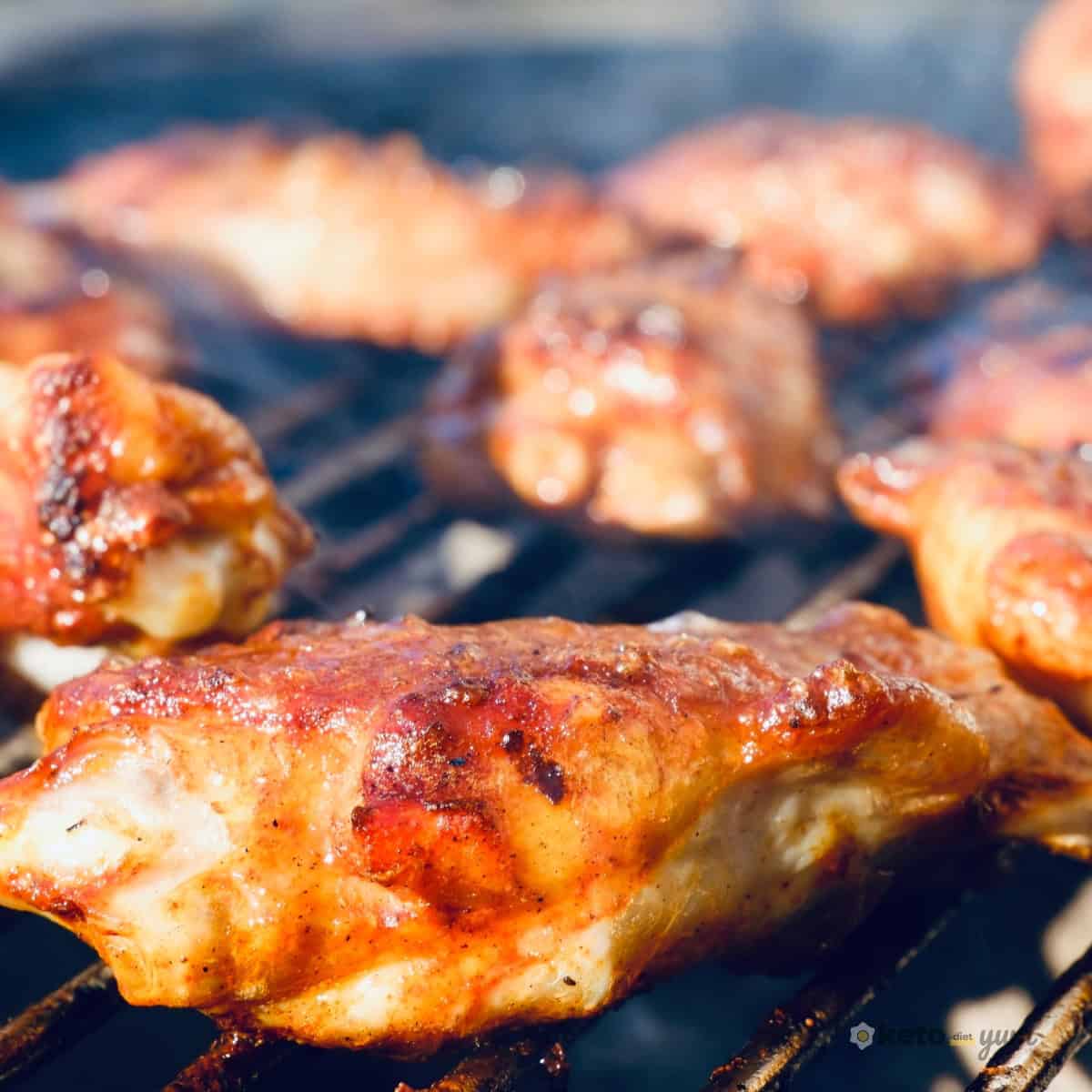
Would you believe that the carnivore diet, an all-meat, zero-carb approach, isn't just another trend but actually has historical roots going back centuries?
Long before processed food, ancient cultures thrived on meat-heavy diets. Even in modern history, groups like the Inuit, Maasai, and early Arctic explorers survived and even thrived on animal-based eating. But it wasn't until recently that people began revisiting this way of eating to heal chronic conditions and simplify nutrition altogether.
One of the big turning points? Anecdotal stories and personal recoveries. From autoimmune relief to eliminating stubborn weight and inflammation, people began turning to carnivore when nothing else worked. And surprisingly, many found that removing all plant-based foods, from vegetables to grains to nuts, actually made them feel better, not worse.
The diet may sound restrictive, but it's incredibly straightforward: meat, eggs, fish, animal fats. No fiber, no sugar, no carbs, and for some, no more bloating, cravings, or brain fog either.
In this guide, I'll walk you through how the carnivore diet works, why so many people are trying it, and how you can follow it in a way that fits your goals. Plus, you'll get a full carnivore meal plan at the end to help you start strong with zero guesswork.
Carnivore Diet Plan
Unlike most modern diets, the carnivore diet doesn't just cut back on carbs, it cuts them out almost entirely.
Here's the thing: carbohydrates are typically the body's main energy source. They break down into glucose, which fuels everything from your muscles to your brain. They also stimulate feel-good chemicals like dopamine, which explains why a bowl of pasta or a warm cookie feels like comfort food for your soul.
But that quick burst of energy? It comes with a cost.
When you eat more carbs than your body can immediately use for fuel, it stores the excess as fat. Over time, that can lead to weight gain, energy crashes, and inflammation. That's why many people start looking for an alternative, and that's where carnivore comes in.
So what happens when you eliminate carbs altogether?
Your body switches to a different fuel source: fat. Specifically, the fat you eat and the fat already stored in your body. When carbs are no longer in the picture, your metabolism turns to dietary fat and body fat for energy, often resulting in improved focus, better blood sugar stability, and yes, fat loss.
And because you're removing all plant foods, you're also avoiding gut-irritating compounds like lectins, oxalates, and phytic acid, things that can mess with digestion, joint health, or immune balance for some people.
The result? A simpler, more stable way of eating that leaves many people feeling full, focused, and inflammation-free.
How the Carnivore Diet Works

The carnivore diet is beautifully simple, almost shockingly so. There are no complicated rules, no food pyramids, and no worrying about macro ratios or tracking calories (unless you really want to). You just eat animal-based foods. That's it.
Where keto focuses on reducing carbs to encourage fat burning, carnivore goes one step further. It eliminates all carbs. On carnivore, your meals come strictly from the animal kingdom, meat, eggs, fish, and animal fats. Some folks include low-lactose dairy like hard cheeses or heavy cream, but many stick to just meat and water.
You're not trying to hit a percentage of fat, protein, and carbs here. You're simply eating zero plant foods, which means no sugars, no starches, and none of the anti-nutrients that come with them, like lectins or oxalates.
And what happens when you do this? Your body, deprived of carbs, enters a fat-burning state very similar to ketosis (just like keto). But here's the key difference: since you're not eating any carbs, your body isn't dancing in and out of ketosis. It's parked there.
This means your body runs steadily on ketones, a clean-burning fuel made from fat. That switch tends to come with some serious perks:
- Reduced inflammation and bloating
- Fewer cravings (especially for sugar)
- Steadier energy throughout the day
- Mental clarity (no more afternoon brain fog)
But isn't eating only meat unhealthy?
That's the question everyone asks first, and it's fair. We've been told for years that saturated fat and red meat were the enemy. But more recent research has challenged that idea. In fact, many people on carnivore diets have reported lower triglycerides, improved blood sugar markers, and better cholesterol ratios, yes, even while eating steak and eggs every day.
Plus, when you're not eating carbs, you're not spiking insulin. That helps stabilize your blood sugar and can be especially helpful for people with insulin resistance, prediabetes, or metabolic issues.
So is carnivore just a meat version of keto?
In a way, yes. The carnivore diet is often considered a stricter form of keto, where all plant foods (even low-carb veggies) are off the table. But while keto gives you flexibility to eat fats from avocados, nuts, and oils, carnivore says: keep it simple. Eat meat. Repeat.
And despite how radical it sounds, the results can speak for themselves. Many people who've struggled with keto plateaus, autoimmune flares, or digestive problems find that going carnivore helps them feel their best, fast.
Shifting Into Fat-Burning Mode on Carnivore
On most diets, your body relies on carbohydrates for fuel. Carbs get broken down into glucose, which enters your bloodstream and powers everything from your brain to your muscles. But when you stop eating carbs altogether, like you do on the carnivore diet, your body is forced to switch gears.
Without glucose to pull from, your liver starts converting fat into ketones, an alternate energy source your body can run on. This state, known as ketosis, is where the magic happens. Your body becomes incredibly efficient at burning fat for energy instead of sugar.
Unlike keto, carnivore doesn't require counting grams of carbs to get into ketosis. Since there are no plant-based foods allowed, your carb intake naturally drops to near zero. That means many people enter ketosis faster and more consistently on carnivore than they ever did on keto.
What Happens When You Cut Out Carbs Completely?
When you first start, your body will go through a transition. That's because your glycogen stores, your built-in stash of glucose, start to empty. Glycogen binds to water, so as your body burns through it, you'll shed some water weight too. This is why you might notice a sudden drop on the scale within the first few days.
This shift can also bring on a few symptoms as your body recalibrates: some fatigue, a little brain fog, maybe even some moodiness. That's normal. People often call it the "carnivore flu", but don't worry, it's short-lived. Hydration, salt, and a bit of patience go a long way.
After a few days, most people say their energy levels surge, their cravings fade, and they feel clearer mentally. Once your body's using fat as its primary fuel source, you'll likely feel more balanced than you did relying on sugar highs and crashes.
Starting Strong on Carnivore
Forget calorie counting. On carnivore, what you eat matters far more than how much. When you're eating nutrient-dense, satiating foods like steak, eggs, and butter, your hunger naturally regulates itself. You eat when you're hungry, and you stop when you're full. Simple.
The best part? You don't need to give up flavor or satisfaction. A well-planned carnivore approach can be surprisingly diverse, even if it sticks to the animal kingdom. Think juicy burgers, crispy chicken thighs, rich bone marrow, tender brisket, and yes, cheese if your body tolerates it.
Our carnivore meal plan includes everything from quick breakfasts to hearty dinners. Whether you're doing ribeye and eggs, salmon patties with ghee, or a cheesy ground beef skillet, there's zero boredom here.
We've even included snack-friendly options like hard-boiled eggs, pork belly bites, or pepperoni crisps, great for when cravings sneak in or you need something on-the-go.
The key? Keep meals simple, satisfying, and high in animal-based fat. That's the fuel your body now thrives on.
Foods to Eat on The Carnivore Diet
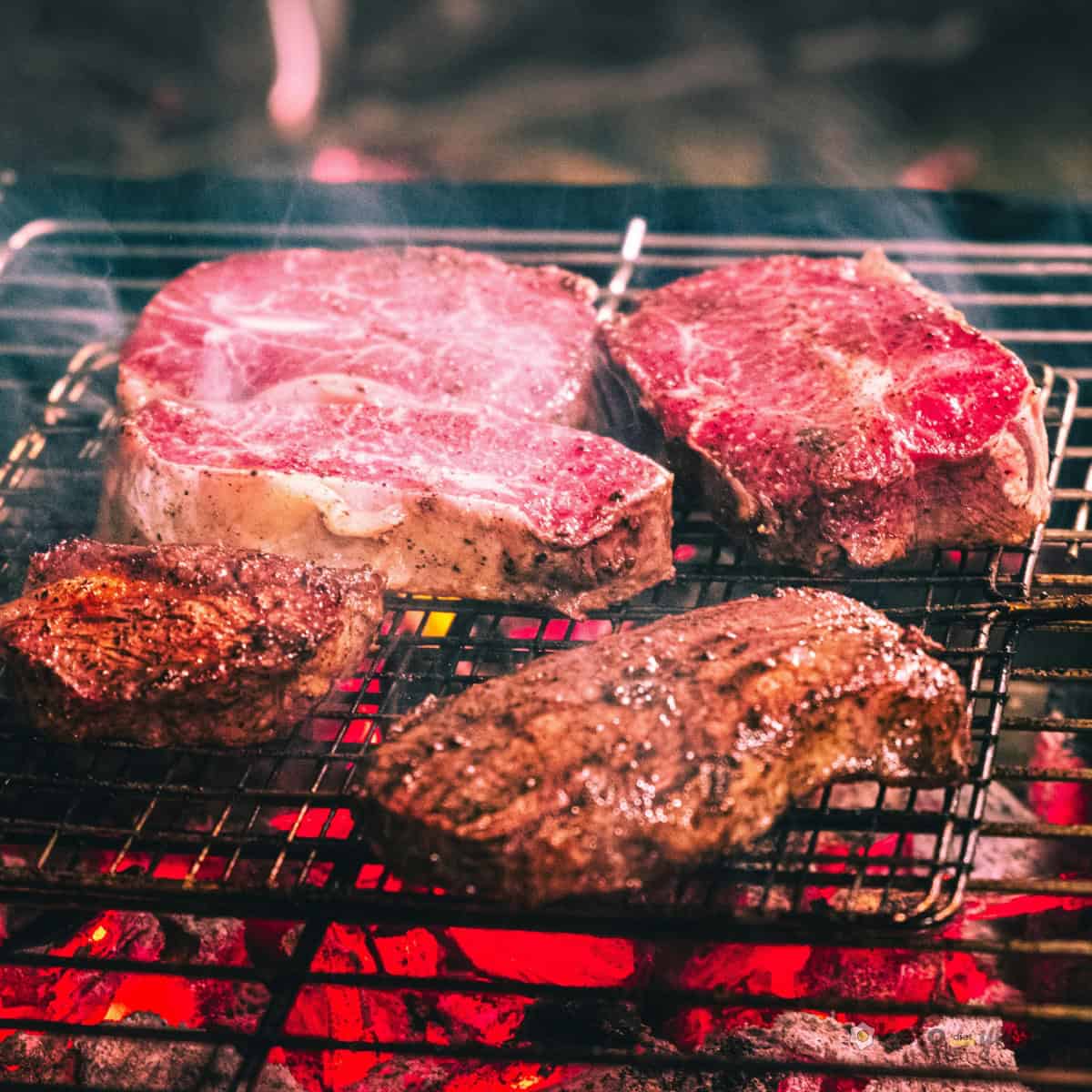
The carnivore diet is as straightforward as it gets: you eat animal-based foods, and that's pretty much it. No carbs, no plant-based products, just nutrient-dense animal foods that support strength, energy, and metabolic health.
Here's a breakdown of foods that fit perfectly into a carnivore lifestyle:
Ruminant Meats (the staple)
- Beef: Ground beef, steaks, roasts, ribs, liver, and other organ meats
- Lamb: Chops, ground lamb, ribs, and organ meats like heart or kidney
- Bison and Venison: Excellent lean options packed with nutrients
Other Animal Proteins
- Pork: Bacon, pork chops, ribs, and pork belly (look for uncured and sugar-free)
- Chicken: Thighs, wings, drumsticks, and even skin-on breasts
- Turkey: Ground, legs, thighs, or whole roasted
- Duck and goose are also great fatty options.
Organ Meats (nature's multivitamins)
- Liver, kidney, heart, brain, spleen, these are powerhouses of vitamins like B12, iron, and vitamin A.
Fish and Seafood
- Fatty fish like salmon, sardines, and mackerel
- Shellfish: shrimp, oysters, mussels, scallops
- White fish like cod or haddock
Eggs
- Whole eggs are a carnivore staple. Eat the yolks, they're rich in choline and healthy fats.
Animal Fats
- Tallow, lard, duck fat, bacon grease, these are great for cooking and adding to meals for energy.
Dairy (if tolerated)
- Full-fat options only: heavy cream, butter, ghee, aged cheeses like cheddar or Parmesan
- Avoid milk due to the lactose content (a sugar), but some tolerate raw dairy or fermented options better.
Bone Broth/STocks
- Great for electrolytes, hydration, and gut support. Use bones from beef, chicken, or pork to make broths and stocks.
Optional Additions (if following a flexible carnivore approach):
- Salt, pepper, and herbs (minimal, if tolerated)
- Collagen powder or carnivore-friendly protein supplements
Top Tip: Always aim for the highest quality meat you can afford, grass-fed, pasture-raised, and wild-caught where possible. But don't let perfection get in the way of consistency; any meat is better than no meat when starting out.
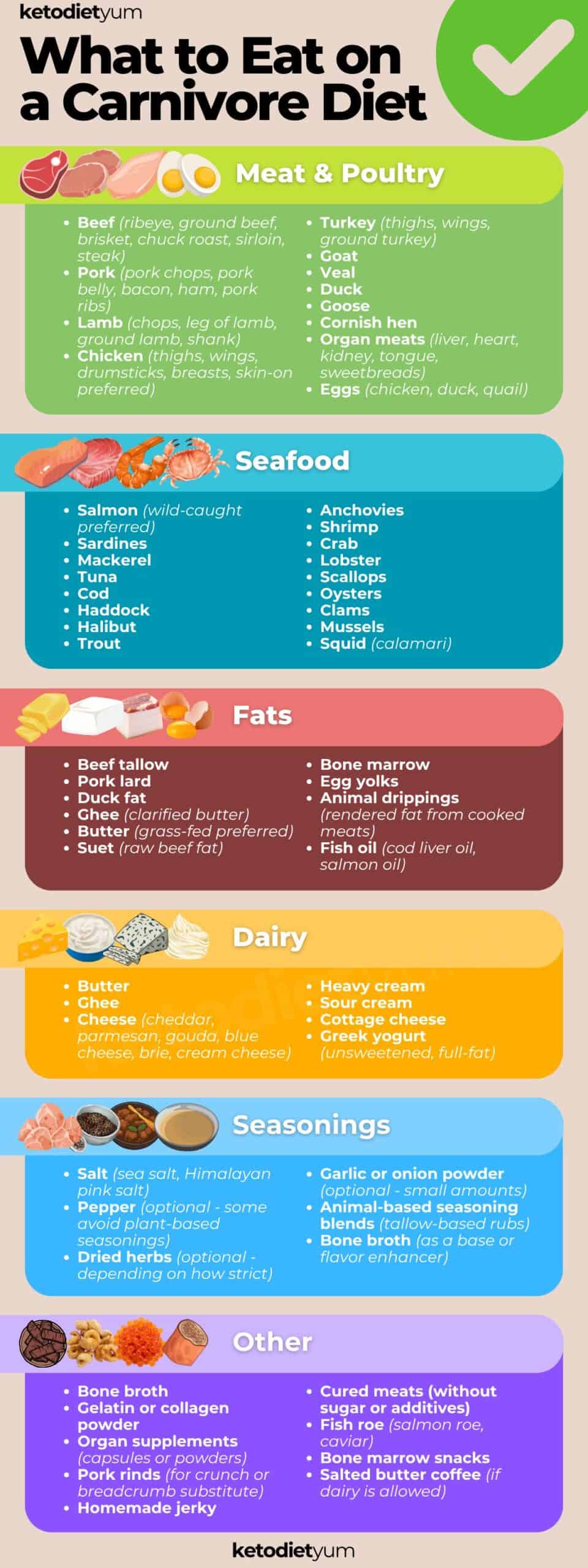
Foods to Avoid on The Carnivore Diet
The carnivore diet is built around simplicity. Animal-based foods in, everything else out. But even within that framework, there are certain things that don't belong. It's best to avoid some foods that sneak in plant-based ingredients, are overly processed, or simply interfere with the clean, animal-only foundation of this diet.
Here's what to avoid if you're committed to a proper carnivore approach:
Plant-Based Foods (Obvious, but worth repeating)
- Fruits, vegetables, grains, legumes, nuts, and seeds, all of them. Even the so-called "healthy" ones.
- This includes spinach smoothies, almond butter, quinoa bowls, and anything else you'd typically find on a plant-based menu.
Even keto-friendly veggies like broccoli and cauliflower are off the table on carnivore. Why? They contain fiber and plant antinutrients (like oxalates and lectins) that many believe can contribute to inflammation and digestive issues.
Processed Meats With Additives
- Stay away from factory-farmed meats that include added sugars, fillers, dextrose, or soy-based binders.
- Read the labels on deli meats, hot dogs, and bacon. If the ingredient list is longer than a couple of lines, there's a problem.
Stick with whole cuts of meat whenever possible.
Artificial Additives & Sweeteners
- Unlike the keto diet, avoid all sugar-free sweeteners.
- Zero-calorie sweeteners like Erythritol, monk fruit, aspartame, sucralose, and even stevia are technically low-carb, but they're not part of an animal-based diet.
- These sweeteners may spike cravings and disrupt the palate, making it harder to stick to clean carnivore eating.
Dairy (for strict carnivores)
- Some people can tolerate dairy just fine, but if you're doing strict carnivore or have autoimmune issues, it's better to avoid it.
- This includes milk, yogurt (yes, even plain Greek), and soft cheeses. Opt instead for butter, ghee, or aged hard cheeses if you're including dairy.
Carnivore "Junk" Foods
- Watch out for packaged "keto carnivore bars" or snacks claiming to be carnivore-friendly but packed with additives, emulsifiers, or collagen fluff with flavorings.
- The more processed it is, the more likely it's straying from the diet's original intent: eating real animal foods.
Condiments & Sauces
- Ketchup, mustard, BBQ sauce, hot sauces, vinegar, or seed oils.
- A bit of salt is totally fine, and for those not being strict, mustard or animal-based bone broth can sometimes be okay. But avoid sugary or plant-based condiments.
Seed & Vegetable Oils
- These are big offenders when it comes to inflammation and poor metabolic health.
- Oils like canola, soybean, sunflower, safflower, grapeseed, and corn oil should be completely eliminated. Use beef tallow, ghee, lard, or duck fat instead.
Alcohol
- Alcohol is not animal-based. Even low-carb alcohols like vodka or dry wine are made from grains or fruit.
- Besides, alcohol stresses the liver and can impair fat metabolism, something that goes directly against the goals of carnivore eating.
"Low-Fat" or "Diet" Animal Products
- Skip lean turkey bacon, fat-free yogurt, or anything labeled "lite." These usually contain added carbs, gums, or sugars to make up for the missing fat. On carnivore, full-fat is king.
Essential Groceries List
Switching to the carnivore diet means your grocery list becomes a lot simpler and a lot more focused on animal-based foods. While there's no need for exotic ingredients or fancy pantry staples, it's important to keep the essentials on hand to make your meals satisfying, balanced, and sustainable.
This list isn't exhaustive, but it's a strong foundation of what to stock your kitchen with. Think of it as your carnivore-approved toolkit.
Animal Proteins (the core of the diet)
- Beef: ground beef, steak, ribs, brisket, roasts, bone-in cuts
- Lamb: lamb chops, shanks, ground lamb
- Pork: pork chops, ribs, pork belly, ham (sugar-free), bacon
- Chicken: thighs, wings, drumsticks, whole chicken, skin-on breasts
- Turkey: turkey legs, thighs, ground turkey
- Duck & Goose: fatty and flavorful options
Organ Meats (nutritional powerhouses)
- Liver: beef, chicken, or lamb
- Heart: rich in CoQ10
- Kidney, Tongue, Brain, Spleen: nutrient-dense and satiating
Fish & Seafood
- Fatty Fish: salmon, sardines, mackerel, herring
- White Fish: cod, haddock, halibut
- Shellfish: shrimp, oysters, scallops, mussels, crab, lobster
- Canned Options: sardines, tuna, salmon (in water, brine, or pure oil, no added sauces)
Eggs
- Whole Eggs: chicken, duck, or quail (pastured if possible)
Animal Fats (for cooking and flavor)
- Tallow (beef fat)
- Lard (pork fat)
- Duck Fat / Goose Fat
- Butter & Ghee (preferably grass-fed)
- Bone Marrow & Suet
Dairy (if tolerated)
- Hard Cheese: Parmesan, cheddar, gouda
- Soft Cheese: brie, cream cheese, cottage cheese
- Heavy Cream & Sour Cream (full-fat, no additives)
- Ghee or Clarified Butter
Note: Eliminate dairy if you have autoimmune or digestive issues. Many strict carnivores skip it altogether.
Broth & Collagen
- Bone Broth: rich in electrolytes and gut-friendly nutrients
- Beef Gelatin or Collagen Powder: optional for joint and skin health
Seasonings (minimal and optional)
- Salt: sea salt, Himalayan salt, Redmond's Real Salt
- Pepper (optional)
- Herbs & Spices: if tolerated and not doing strict carnivore, small amounts of garlic powder or paprika can be used
Drinks
- Water: plain or sparkling
- Bone Broth: hydrating and mineral-rich
- Black Coffee (optional and debated)
- Plain Herbal Tea (if flexible carnivore)
What NOT to Stock
Avoid anything plant-based, processed, or carb-heavy:
- No fruits or vegetables
- No plant oils (like canola, soybean, or sunflower)
- No grains, flours, nuts, or seeds
- No sugar or artificial sweeteners
- No packaged low-fat or diet products
- No condiments with additives, sweeteners, or non-animal ingredients
Keep it simple. The carnivore diet thrives on whole, nutrient-rich animal foods. With this list, you'll be well-prepared to stay nourished, energized, and focused without the guesswork.
Exercising on the Carnivore Diet
Let's clear one thing up. No, you don't have to exercise on the carnivore diet to see results. This way of eating is already powerful on its own when it comes to reducing inflammation, improving metabolic health, and encouraging fat loss. But that doesn't mean exercise doesn't have a place.
Adding movement to your daily routine isn't about canceling out food choices or burning off meals. It's about supporting your overall health and making your body stronger, more resilient, and more functional.
Here are some of the benefits you can enjoy when pairing the carnivore diet with regular movement:
- Better Bone Strength - Lifting weights or doing bodyweight resistance training improves bone mineral density, especially helpful for aging adults or postmenopausal women.
- Stronger Immune System - Moderate exercise can help bolster your immune system. Just be cautious not to overtrain, especially early in the carnivore transition.
- Improved Blood Sugar Regulation - Even though the carnivore diet eliminates carbs (and blood sugar spikes), exercise still helps improve insulin sensitivity and can benefit those managing metabolic issues or coming off high-carb diets.
- Cognitive Benefits - Studies continue to show that regular physical activity supports brain function, slows cognitive decline, and may reduce the risk of neurodegenerative diseases.
- Heart Health - Regular aerobic or strength training activities promote cardiovascular health, reduce blood pressure, and lower your risk of heart disease.
- Longevity and Vitality - Exercise helps reduce all-cause mortality risk by addressing factors like blood pressure, inflammation, and metabolic dysfunction. It's not just about lifespan, it's about healthspan.
When starting a carnivore diet, especially if you're coming from a standard high-carb diet, you might notice a temporary dip in energy levels. That's normal. As your body adapts to burning fat for fuel instead of carbs, it's a good idea to take it easy with intense exercise.
Focus on low-impact, enjoyable activities at first. Things like walking, stretching, and light strength training. Increase intensity as your energy returns and your body adjusts.
Most importantly, move your body because it feels good and supports your health, not because you're trying to "earn" your meals. On carnivore, your food is your fuel, and that's powerful in itself.
Eating Out Tips on Carnivore
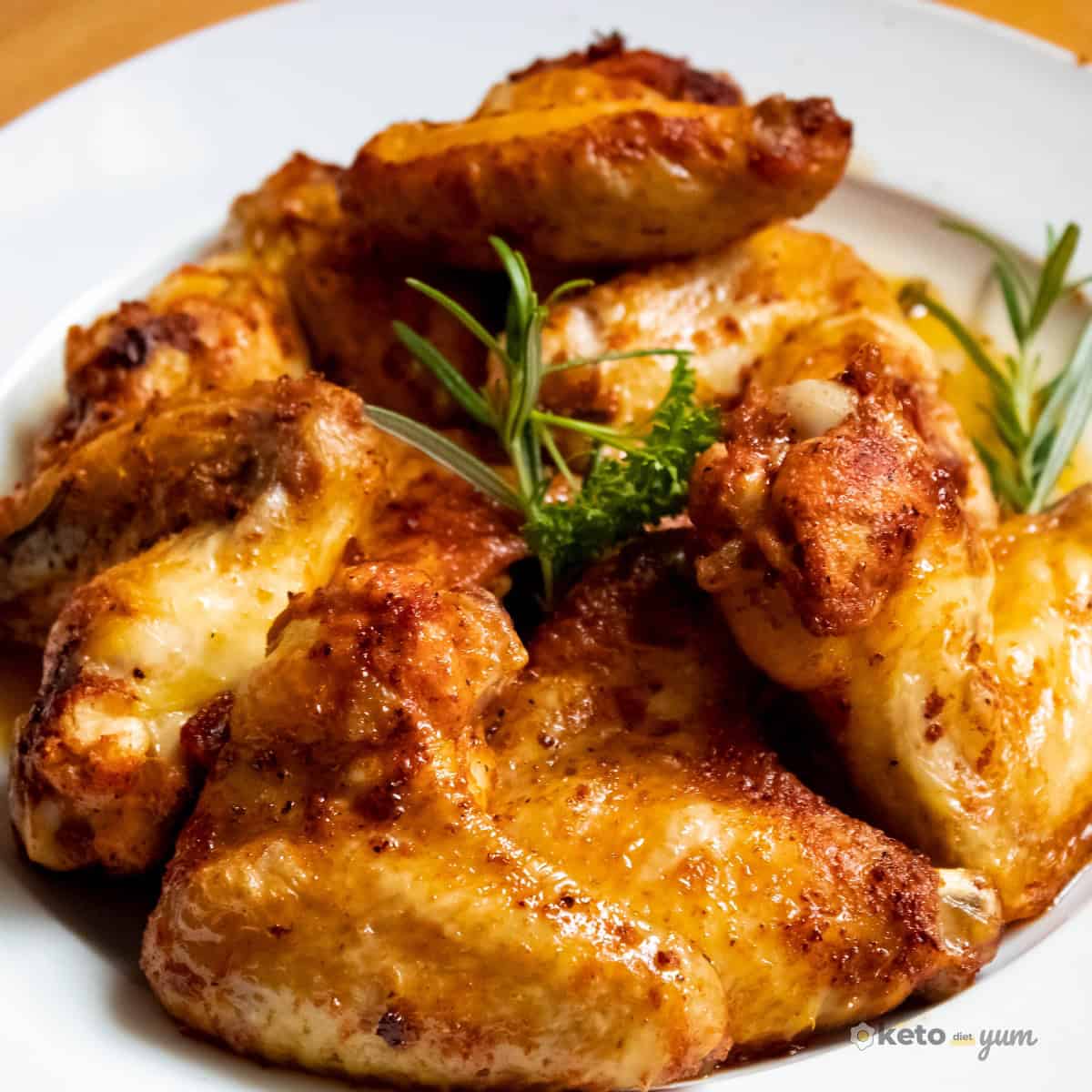
Dining out while following the carnivore diet might seem tricky, but with a bit of know-how, it's surprisingly manageable. Whether you're grabbing fast food or enjoying a sit-down meal, there are plenty of ways to stay on track with your all-meat lifestyle. Here's how to navigate popular spots while keeping it carnivore:
- McDonald's / Burger King - Stick to plain beef patties. Order them without the bun, ketchup, or any vegetables. You can ask for extra patties, bacon, or cheese to make it more filling. Keep it simple and stick to meat and dairy.
- KFC - Go for grilled chicken if available. Skip the breading, sauces, and all sides. A few pieces of grilled chicken can make a quick and easy carnivore-friendly meal.
- Taco Bell - Order plain meat options. Ask for seasoned beef or grilled chicken on its own. If you tolerate cheese, you can include that too, but skip all veggies, tortillas, and sauces.
- Gas Stations - Many gas stations carry hard-boiled eggs, beef jerky (check for added sugar), cheese sticks, and deli meats. These can be convenient options in a pinch.
- Wendy's - Try a bacon cheeseburger without the bun or condiments. You can add extra patties or cheese to make it more substantial.
- In-N-Out Burger - Order your burger "protein style" or bunless. Ask for no spread, and stick with plain meat and cheese if you allow dairy.
- Chipotle - Order a meat bowl with double steak, chicken, or carnitas. Skip all veggies, beans, and rice. Just meat, and optionally cheese if it fits your carnivore version.
- Jimmy John's (Unwich) - Order sandwiches as an "Unwich" in a lettuce wrap and ask for only meat and cheese. Say no to sauces, veggies, or condiments.
- Five Guys - Their burgers can be ordered without buns and served in a tray or wrapped in lettuce. Ask for bacon and cheese, and skip everything else.
- Steakhouses / Casual Dining - These are often the best options for carnivores. Just order steak, grilled chicken, pork chops, or seafood. Ask for it to be cooked simply with salt and butter. Skip the sides and request extra meat or eggs if available.
Tips for Staying Carnivore When Dining Out:
- Always ask how your meat is prepared, and avoid sauces or marinades that contain sugar, soy, or seed oils.
- Don't be shy about customizing your order.
- Prioritize meat, eggs, and animal-based fats.
- If necessary, eat before you go out or bring your own snacks.
With a little preparation, dining out on the carnivore diet is not only possible, it's often easier than expected. Stick to animal foods and keep your meals simple.
Benefits of The Carnivore Diet
The carnivore diet has gained popularity for its simplicity and powerful effects on health and wellness. While some may see it as a radical shift from conventional nutrition advice, more people are finding that removing plant foods and focusing solely on animal-based foods can dramatically improve their well-being. Here are the top benefits of adopting a carnivore lifestyle:
1. Reduced Hunger and Cravings
Because the carnivore diet emphasizes nutrient-dense, satiating foods like fatty meats and eggs, many people report significantly reduced hunger and food cravings. Protein and fat are both highly satisfying, meaning you'll naturally eat less without feeling deprived.
2. Rapid and Sustainable Weight Loss
By eliminating carbs entirely, the carnivore diet helps reduce insulin levels and inflammation, leading to a natural drop in water weight and fat stores. Many find they lose weight more quickly compared to traditional calorie-restricted diets. Plus, the simplicity of the diet means it's easier to stick with long term.
3. Belly Fat Reduction
Carnivore eating promotes fat loss around the midsection, which is key since abdominal fat is closely linked with heart disease, insulin resistance, and other chronic conditions. Cutting carbs and focusing on meat can reduce this dangerous visceral fat.
4. Lower Triglyceride Levels
High triglycerides are often the result of high carb intake. Removing carbs and processed foods helps significantly reduce these blood fats, lowering your risk of cardiovascular issues.
5. Increased HDL (Good) Cholesterol
The carnivore diet often results in higher HDL cholesterol, which is protective for the heart. Eating saturated fats and cholesterol-rich foods, contrary to old beliefs, can actually improve this important marker.
6. Improved LDL Particle Size
While total LDL may or may not change, the size of the particles matters. Carnivore-style eating tends to shift LDL to larger, less harmful particles, reducing cardiovascular risk.
7. Better Blood Sugar and Insulin Regulation
Zero carbs means zero blood sugar spikes. People with type 2 diabetes or insulin resistance often see dramatic improvements or even remission by going carnivore. It reduces the need for medication and helps stabilize energy.
8. Lower Blood Pressure
As inflammation decreases and water weight is shed, blood pressure tends to improve. This can be a lifesaver for those struggling with hypertension.
9. Relief from Metabolic Syndrome
Symptoms like abdominal obesity, high blood sugar, and poor lipid profiles often improve on the carnivore diet, making it an effective strategy for addressing metabolic syndrome.
10. Cognitive Clarity and Brain Health
Many carnivore dieters report improved mental clarity, focus, and mood. Without blood sugar crashes and inflammatory foods, the brain runs more efficiently, often on ketones derived from fat.
11. Potential Anti-Cancer Properties
By cutting out sugar and plant anti-nutrients, the carnivore diet may help starve cancer cells that rely on glucose. While more research is needed, some early findings and anecdotal evidence suggest it could reduce cancer risks or aid in recovery.
From weight loss to improved mental and metabolic health, the carnivore diet delivers a wide range of benefits for those willing to give it a try. Like any major dietary change, it's always wise to consult with your healthcare provider, especially if you have pre-existing health conditions or are on medications.
This simple, animal-based way of eating has helped countless people reclaim their energy, shed stubborn fat, and feel better than ever.
Carnivore Diet Meal Plan Breakdown
- Stage One: The First 7 Days of Carnivore: This is your adaptation period. During these first seven days, your body shifts from relying on carbohydrates to burning fat for fuel. You'll remove all plant-based foods and processed carbs, focusing entirely on meat, fat, and salt. This transition might bring some temporary side effects, often called the "carnivore flu," but don't worry, your body will adapt quickly.
- Stage Two: Building Consistency (Days 8-21): Once you've gotten through the initial adjustment, the next two weeks are about building consistency and experiencing the full benefits of the carnivore diet. Energy levels stabilize, hunger diminishes, and mental clarity improves. Continue focusing on nutrient-dense animal products like beef, eggs, and organ meats.
Common Side Effects During Transition (and How to Manage Them)
As your body adapts to burning fat and protein exclusively, you might experience a few temporary side effects. Here's what you might encounter and how to handle it:
1. Low Blood Sugar (Hypoglycemia)
Your body may still be adjusting from a high-carb diet. Symptoms like dizziness, shakiness, or fatigue may occur. Stay hydrated, add extra salt to your meals, and give your body a few days to adapt.
2. Carnivore Flu (Headaches & Fatigue)
You might experience flu-like symptoms, including headaches and sluggishness, due to electrolyte imbalances. Combat this by drinking water with added sea salt or bone broth to replenish sodium and minerals.
3. Dizziness & Cramping
As your body flushes excess water and sodium, minerals like magnesium and potassium can drop. Consider supplementing with electrolytes or consuming mineral-rich bone broth to restore balance.
4. Constipation or Diarrhea
Changes in bowel movements are normal when switching to an all-meat diet. Ensure you're eating enough fat, staying hydrated, and consuming collagen-rich cuts like oxtail or bone broth to support digestion.
5. Sleep Disruptions
Some people report restless sleep or insomnia during the first week. This may be due to blood sugar stabilization or increased adrenaline. Try adding a fatty meat snack before bed and ensure you're getting enough salt.
6. Heart Palpitations
If you experience a racing heart, it's likely a sign of low electrolytes. Increase your salt intake or consider adding magnesium and potassium supplements.
7. Sugar Cravings
As your body detoxes from carbs, sugar cravings may spike. Stay strong, these cravings usually fade after a few days. Eat more fatty cuts of meat to stay full and satisfied. Distraction through movement, rest, or hobbies can also help.
Note on Children: The carnivore diet is a therapeutic elimination diet primarily used by adults for specific health reasons. It is not recommended for growing children without close medical supervision. A balanced diet with quality animal and plant foods is more appropriate for their development.
Sticking to the carnivore diet gets easier every day, especially once you move past the initial adjustment period. Give your body time to adapt, listen to its cues, and focus on nutrient-rich animal foods. The simplicity of the carnivore lifestyle can make it surprisingly sustainable, and incredibly effective.
21-Day Meal Plan & Recipes
Stage One: Week One (Days 1 to 7)
Now that you understand the fundamentals of the carnivore diet, it's time to dive into Stage One of our beginner-friendly carnivore meal plan.
This first week is all about transitioning your body away from carbohydrates and plant foods and easing into a fully animal-based way of eating. This will help eliminate cravings, deplete glycogen stores, and shift your metabolism into fat-burning mode.
Stick to the daily meal suggestions, but feel free to swap meals or repeat favorites, carnivore eating is meant to be simple and satisfying. Add extra portions based on your hunger and energy needs.
If you're unsure how much food to eat, remember: on carnivore, you don't need to track macros or calories meticulously. Just focus on eating fatty cuts of meat until you're full, and let your hunger be your guide.
In this first phase, your meals will center around zero-carb, nutrient-dense animal foods like:
- Beef (ground, steak, roast, etc.)
- Eggs
- Lamb
- Pork (especially bacon or fatty cuts)
- Organ meats (optional but beneficial)
- Salt and animal fats (tallow, ghee, butter)
The goal is to avoid all plant foods, including herbs and spices, for at least the first seven days to give your gut a reset and allow your body to fully adapt to meat-based fuel. Some people enter ketosis during this period, but even if you don't, you'll likely notice reduced cravings and more stable energy.
Expect each day's meals to provide around 1600-2000 calories, though you can eat more or less depending on your body's needs. There's no need to aim for a specific calorie target, just eat to satisfaction from the approved foods list.
A printable shopping list and sample daily meals for Stage One are provided in the next section to help you prepare. This week is about simplicity, satiety, and setting the foundation for success.
Day 1 - 1785 calories
Breakfast - Beef Bacon & Eggs (435 calories)
- 3 large eggs
- 3 slices beef bacon
- 1 teaspoon beef tallow for frying
Lunch - Grilled Ribeye Steak (640 calories)
- 200g (7 oz) ribeye steak
- 1 tablespoon butter
Snack - Pork Cracklings & Hard-Boiled Eggs (320 calories)
- 30g (1 oz) pork rinds
- 2 boiled eggs
Dinner - Ground Lamb Patties with Lamb Fat (390 calories)
- 150g (5 oz) ground lamb
- 1 tablespoon rendered lamb fat
Day 2 - 1700 calories
Breakfast - Scrambled Eggs with Liver (350 calories)
- 2 eggs
- 75g (2.5 oz) beef liver
- 1 tablespoon butter
Lunch - Grilled Chicken Thighs (Skin-On, Bone-In) (600 calories)
- 2 medium thighs (~250g)
- 1 tablespoon chicken fat or ghee
Snack - Beef Jerky (200 calories)
- 40g (1.5 oz) homemade jerky
Dinner - Salmon Fillet with Butter (380 calories)
- 150g (5 oz) salmon
- 1 tablespoon butter
Day 3 - 1680 calories
Breakfast - Omelette with Pork Belly (410 calories)
- 3 eggs
- 50g pork belly
Lunch - Beef Burger Patties (545 calories)
- 2 x 100g beef patties
- 1 tablespoon beef tallow
Snack - Boiled Shrimp & Hard-Boiled Egg (170 calories)
- 100g shrimp
- 1 egg
Dinner - Grilled Lamb Chops (400 calories)
- 150g lamb chops
- 1 teaspoon ghee
Day 4 - 1720 calories
Breakfast - Eggs and Sardines (320 calories)
- 2 eggs
- 1 tin sardines in olive oil
Lunch - Roast Duck (with Skin) (530 calories)
- 150g roasted duck (with skin)
- Duck fat for basting
Snack - Cheddar Cheese & Jerky (270 calories)
- 30g cheddar
- 30g jerky
Dinner - Pan-Fried Pork Chops (560 calories)
- 200g pork chops
- 1 teaspoon bacon grease
Day 5 - 1675 calories
Breakfast - Fried Eggs & Sausage (440 calories)
- 2 eggs
- 2 pork sausages (~100g)
Lunch - Roast Beef Slices & Bone Marrow (510 calories)
- 150g roast beef
- 1 roasted marrow bone (~50g marrow)
Snack - Chicken Skin Crisps (280 calories)
- 40g baked chicken skin
Dinner - Grilled Tuna Steak & Butter (370 calories)
- 150g tuna steak
- 1 tablespoon butter
- 1 poached egg
Day 6 - 1750 calories
Breakfast - Soft-Boiled Eggs & Butter (310 calories)
- 3 eggs
- 1 tablespoon butter
Lunch - Roast Pork Belly (800 calories)
- 200g pork belly
Snack - Beef Jerky (200 calories)
- Beefy Jerky (40g)
Dinner - Pan-Seared Chicken Livers & Ghee (280 calories)
- 150g chicken liver
- 1 tablespoon ghee
Day 7 - 1680 calories
Breakfast - Bacon & Fried Eggs (360 calories)
- 2 eggs
- 3 slices bacon
- 1 teaspoon bacon grease
Lunch - Salmon & Shrimp Plate (425 calories)
- 120g salmon
- 100g shrimp
- 1 tablespoon butter
Snack - Hard Cheese Cubes & Boiled Egg (190 calories)
- 30g cheese
- 1 boiled egg
Dinner - Grilled Ribeye Steak (540 calories)
- 200g (7 oz) ribeye
Shopping List: Week 1 (Days 1 to 7)
Meat & Poultry
- Beef ribeye steak - 400g
- Ground lamb - 150g
- Lamb chops - 150g
- Lamb shoulder - 200g
- Roast beef - 150g
- Beef patties - 400g
- Beef liver - 200g
- Chicken thighs - 4 to 6 medium
- Chicken drumsticks - 2
- Chicken skin - 100g (or save trimmings)
- Chicken liver - 150g
- Pork belly - 250g
- Pork sausages - 2 (approx. 100g)
- Pork chops - 200g
- Roast duck or duck breast - 150g
- Bone marrow bones - 2 small
Seafood
- Salmon fillet - 270g
- Tuna steak - 150g
- Shrimp - 200g
- Sardines (in oil/water) - 3 tins
Eggs
- ~24 large eggs
Dairy (optional)
- Butter - ~150g
- Ghee - small jar
- Cheddar cheese - ~100g
Snacks
- Pork cracklings - 60g
- Beef jerky - 100g
Fats for Cooking
- Beef tallow, bacon grease, duck fat - small amounts (can be rendered from meats)
Stage Two: Week Two (Days 8 to 14)
Congratulations! You've successfully completed the first seven days of the carnivore diet, a huge accomplishment. By now, your body is beginning to adapt to running on fat and protein, and you've likely experienced reduced cravings, improved energy, and better digestion.
In Stage Two, we'll begin to diversify your meals while still sticking to the core principles of the carnivore lifestyle. This phase introduces variety by including different cuts of meat, more organ meats (if tolerated), and optional additions like cheese, seafood, or bone broth, depending on your personal goals and sensitivity to dairy.
You may also choose to experiment with different cooking methods (grilling, pan-frying, slow-cooking) to keep meals satisfying and interesting.
Here's what to expect in Stage Two:
- Continue focusing on nutrient-dense animal foods
- Keep carbs at zero (or as close as possible)
- Prioritize fatty cuts for satiety and energy
- Drink plenty of water and consider adding electrolytes if needed
- Optional: Introduce dairy (like hard cheeses or heavy cream) if you tolerate it well
Remember: there's no need to count calories or macros. Just eat until full and listen to your body. Hunger should be your only signal for when to eat.
As with Week One, you can repeat your favorite meals, skip any you don't enjoy, or customize the plan around what's available and affordable near you. The goal now is to settle into a sustainable, enjoyable rhythm with carnivore eating.
Ready to build consistency and keep feeling better each day? Let's move on to the meals and tips for Week Two!
Day 8 - 1700 calories
Breakfast - Sardine Omelette (305 calories)
- 2 eggs
- 1 tin sardines in water
- 1 teaspoon butter
Lunch - Roast Chicken Thighs (Skin-On) (600 calories)
- 2 chicken thighs (~250g)
- 1 tablespoon chicken fat
Snack - Pork Cracklings (180 calories)
- 30g pork cracklings
Dinner - Seared Beef Liver with Butter (320 calories)
- 100g beef liver
- 1 tablespoon butter
- 1 egg
Day 9 - 1690 calories
Breakfast - Boiled Eggs & Cheddar Cubes (260calories)
- 2 eggs
- 30g cheese
Lunch - Lamb Shoulder Roast (650 calories)
- 200g lamb shoulder
- 1 tablespoon rendered lamb fat
Snack - Beef Jerky & Egg (220 calories)
- 30g jerky
- 1 boiled egg
Dinner - Fried Chicken Drumsticks (Skin-On) (360 calories)
- 2 drumsticks (~150g)
Day 10 - 1730 calories
Breakfast - Scrambled Eggs & Chicken Skin (350 calories)
- 2 eggs
- 30g crispy chicken skin
Lunch - Grilled Beef Patties & Bone Marrow (660 calories)
- 2 x 100g beef patties
- 1 small marrow bone
Snack - Sardines in Oil (180 calories)
- 1 tin of sardines in oil
Dinner - Pan-Seared Duck Breast (Skin-On) (420 calories)
- 150g duck breast
- Duck fat for cooking
Day 11 - 1700 calories
Breakfast - Scrambled Eggs with Lamb Fat (310 calories)
- 3 eggs
- 1 tablespoon lamb fat
Lunch - Pan-Fried Chicken Thighs (Skin-On) (600 calories)
- 2 thighs (~250g)
- 1 tablespoon butter
Snack - Beef Jerky & Hard-Boiled Egg (220 calories)
- 30g jerky
- 1 egg
Dinner - Seared Pork Loin Chops (470 calories)
- 200g pork loin
- 1 teaspoon pork fat
Day 12 - 1750 calories
Breakfast - Bacon & Poached Eggs (320 calories)
- 3 slices bacon
- 2 eggs
Lunch - Grilled Lamb Chops (510 calories)
- 200g lamb chops
- 1 tablespoon lamb fat
Snack - Sardines in Oil (180 calories)
- 1 tin of sardines in oil
Dinner - Pan-Fried Chicken Liver with Butter (350 calories)
- 150g chicken liver
- 1 tablespoon butter
- 1 egg
Day 13 - 1690 calories
Breakfast - Boiled Eggs & Pork Belly Bites (390 calories)
- 2 eggs
- 60g pork belly
Lunch - Grilled Ribeye Steak (540 calories)
- 200g ribeye
Snack - Hard Cheese & Jerky (270 calories)
- 30g cheese
- 30g jerky
Dinner - Seared Tuna with Butter (300 calories)
- 150g tuna steak
- 1 tablespoon butter
Day 14 - 1720 calories
Breakfast - Omelette with Duck Fat (240 calories)
- 2 eggs
- 1 tablespoon duck fat
Lunch - Roast Pork Shoulder (560 calories)
- 200g pork shoulder
- 1 teaspoon pork fat
Snack - Sardines & Egg (250 calories)
- 1 tin sardines
- 1 boiled egg
Dinner - Beef Patties & Cheese (620 calories)
- 2 x 100g beef patties
- 30g cheese
Shopping List: Week 2 (Days 8 to 14)
Meat & Poultry
- Chicken thighs - 4 to 6 medium
- Chicken drumsticks - 4
- Chicken liver - 300g
- Chicken skin or fat - 100g
- Duck breast or whole duck - 300g
- Pork belly - 150g
- Pork shoulder - 200g
- Pork loin chops - 200g
- Beef ribeye - 400g
- Beef patties - 400g
- Lamb chops - 200g
- Lamb shoulder or fat - 150g
- Bone marrow (if not already in Week 1) - optional
Seafood
- Tuna steak - 300g
- Sardines (in oil or water) - 4 tins
- Salmon (if repeating) - 120g
Eggs
- ~22 large eggs
Dairy (optional)
- Butter - ~200g
- Cheese (e.g. cheddar) - ~120g
- Ghee (if using)
Snacks
- Pork cracklings / skin - ~80g
- Beef jerky - ~100g
Fats for Cooking
- Duck fat, lamb fat, bacon grease - collect from cooking or small tubs
Stage Two: Week Three (Days 15 to 21)
By now, you're well into your carnivore journey and should be feeling the benefits, reduced bloating, steady energy, fewer cravings, and possibly some weight loss or clearer skin. You've likely found some favorite meals and are getting more comfortable with the simplicity and satisfaction this way of eating provides.
Week Three is all about consistency and confidence. If you've stuck with the plan, your body is now fully adapted to using fat for fuel, and meals should feel intuitive and deeply nourishing.
In this final stage of the beginner's plan, keep enjoying:
- Simple, whole animal-based foods like beef, lamb, pork, chicken, and eggs
- Fatty cuts like ribeye, short ribs, pork belly, and ground beef
- Optional nutrient-dense extras like liver, bone marrow, or sardines
- Hydration support with salt, water, and optional electrolytes
You can continue repeating your favorite meals or keep trying new ones from the plan, whatever helps you stay satisfied and on track.
If you've made it this far, well done! You've taken control of your health in a powerful way. Let this final week solidify your routine and show you how sustainable and freeing the carnivore lifestyle can truly be.
Let's finish strong with the meal ideas and tips for Week Three! 🥩
Day 15 - 1690 calories
Breakfast - Scrambled Eggs & Bacon Fat (310 calories)
- 3 eggs
- 1 tablespoon bacon grease
Lunch - Chicken Drumsticks & Thigh (600 calories)
- 2 drumsticks + 1 thigh (~300g)
Snack - Crispy Pork Skin (250 calories)
- 40g pork skin
Dinner - Pan-Seared Duck Breast (420 calories)
- 150g duck breast
- 1 teaspoon duck fat
Day 16 - 1700 calories
Breakfast - Poached Eggs & Pork Sausage (440 calories)
- 2 eggs
- 2 pork sausages (~100g)
Lunch - Grilled Lamb Shoulder & Butter (700 calories)
- 200g lamb shoulder
- 1 tablespoon butter
Snack - Jerky & Cheese (270 calories)
- 30g jerky
- 30g cheese
Dinner - Pan-Seared Chicken Liver & Egg (225 calories)
- 100g chicken liver
- 1 fried egg
- 1 teaspoon ghee
Day 17 - 1690 calories
Breakfast - Fried Eggs with Bacon Fat (310 calories)
- 3 eggs
- 1 tablespoon bacon grease
Lunch - Beef Short Ribs (Slow Cooked) (550 calories)
- 200g short ribs, meat only
- Fat from cooking
Snack - Hard-Boiled Eggs & Sardines (320 calories)
- 2 eggs
- 1 tin sardines
Dinner - Grilled Pork Belly (520 calories)
- 150g pork belly
Day 18 - 1720 calories
Breakfast - Scrambled Eggs & Lamb Fat (310 calories)
- 3 eggs
- 1 tablespoon lamb fat
Lunch - Pan-Fried Duck Breast with Skin (420 calories)
- 150g duck breast
- Duck fat
Snack - Jerky & Egg (220 calories)
- 30g jerky
- 1 egg
Dinner - Roast Pork Chops (480 calories)
- 200g pork chops
Day 19 - 1680 calories
Breakfast - Bacon & Boiled Eggs (320 calories)
- 2 eggs
- 3 slices bacon
Lunch - Lamb Chops with Fat (530 calories)
- 200g lamb chops
- 1 tablespoon lamb fat
Snack - Cheese Cubes & Rinds (300 calories)
- 30g cheese
- 30g pork rinds
Dinner - Pan-Seared Salmon (380 calories)
- 150g salmon
- 1 tablespoon butter
Day 20 - 1710 calories
Breakfast - Fried Eggs & Chicken Skin Crisps (350 calories)
- 2 eggs
- 30g chicken skin
Lunch - Roast Beef with Tallow (540 calories)
- 200g roast beef
- 1 tablespoon beef tallow
Snack - Boiled Eggs & Sardines (320 calories)
- 2 eggs
- 1 tin sardines
Dinner - Grilled Pork Shoulder (500 calories)
- 150g pork shoulder
Day 21 - 1680 calories
Breakfast - Omelette with Cheese & Ghee (295 calories)
- 2 eggs
- 30g cheese
- 1 teaspoon ghee
Lunch - Chicken Drumsticks & Thigh (600 calories)
- 2 drumsticks + 1 thigh (~300g)
Snack - Beef Jerky & Egg (220 calories)
- 30g jerky
- 1 boiled egg
Dinner - Grilled Tuna Steak & Butter (300 calories)
- 150g tuna steak
- 1 tablespoon butter
Shopping List: Week 3 (Days 15 to 21)
Meat & Poultry
- Chicken thighs - 2-4
- Chicken drumsticks - 4
- Chicken liver - 200g
- Chicken skin - 60g
- Pork belly - 300g
- Pork shoulder - 350g
- Pork loin or chops - 200g
- Lamb shoulder - 200g
- Lamb chops - 200g
- Beef roast - 200g
- Beef short ribs - 200g
- Duck breast - 300g
- Pork sausages - 2 (100g)
Seafood
- Sardines - 4 tins
- Tuna steak - 150g
- Salmon - 150g
Eggs
- ~22 large eggs
Dairy (optional)
- Butter - 200g
- Cheese - 120g
- Ghee - small jar
Snacks
- Beef jerky - ~120g
- Pork rinds - 30g
Fats for Cooking
- Bacon grease, duck fat, tallow, lamb fat - ~150g total or rendered from meats
Final Remarks
If you've made it this far, thank you so much for reading!
This guide has taken a no-nonsense approach to help you get started with the carnivore diet. It's a clear, beginner-friendly meal plan that's straightforward to follow, and best of all, it's completely FREE.
Starting any new way of eating can be life-changing, and I believe everyone deserves access to the tools that can help them regain their health, energy, and confidence.
This 21-day carnivore meal plan is designed to be simple, satisfying, and sustainable. I've focused on nutrient-dense animal foods that are naturally filling, making it easier to stay on track and avoid cravings or unnecessary snacking.
Whether you're here to lose weight, heal inflammation, improve mental clarity, or stabilize your blood sugar, the carnivore diet offers powerful results, and this guide is just the beginning.
This isn't just another diet trend. More and more people are discovering the benefits of going back to the basics with animal-based eating, and experiencing life-changing results.
So stick with it. Commit to the 21 days. You might be surprised how quickly your body responds when you remove the noise and focus on real food.
And if you enjoyed this article or have started the plan, I'd love to hear from you, drop a comment and let me know how it's going!
Welcome to the carnivore lifestyle. 🥩🔥
Pin For Later!
